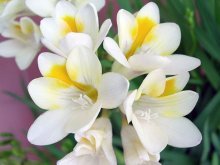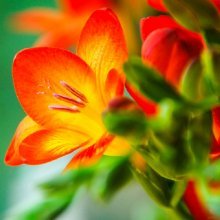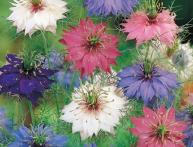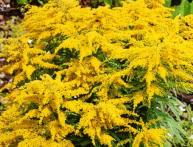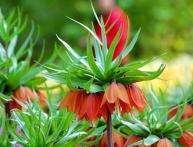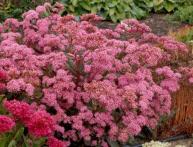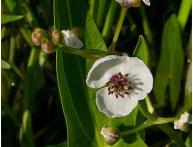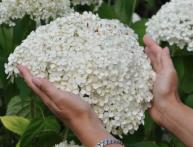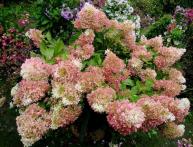Freesia: planting and caring for a flower, recommendations for growing
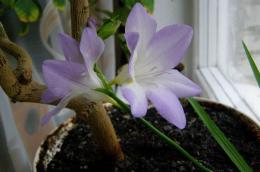
Freesia is a bulbous plant that can rightfully be considered one of the most beautiful. It can grow both in open ground and in a pot on the window, and at the same time feel equally beautiful and please the eye.
The plant's homeland is considered to be South Africa, where it grew on damp banks among bushes. Now there are about 20 species freesia. Some were bred by breeders through crossbreeding, some were taken from the wild. The most common is considered to be hybrid freesia, which first saw the light of day about 100 years ago.
Graceful and elegant freesia is distinguished by its grace, beauty, and incredible aroma, which is slightly similar to the smell of lily of the valley. Today this flower is at the peak of popularity among cut plants.
Content:
Soil preparation and planting
Freesia will look great in a garden plot or in a flower bed near the house. It will undoubtedly decorate the appearance of the site and give it special sophistication. But in order for a flower to please you with its appearance, you need to properly prepare the soil and the plant itself. To do this, you need to grow the freesia bulbs a little. It is better to do this in March or early April. To get excellent results you need to follow a certain sequence of actions.
Carefully separate the scales that have peeled off and soak the onion in a 0.2% foundation solution for 30 minutes. In this way, you will prevent the appearance and development of fungal diseases to which the bulbs are susceptible at the initial stage. Place fertile, loose soil in pots, preferably made of clay.
You need to plant the treated bulbs in them to a depth of about 5 cm. You need to save the flower pots in a well-lit, warm place until the moment landings. A loggia or window sill in the kitchen is perfect for these purposes.
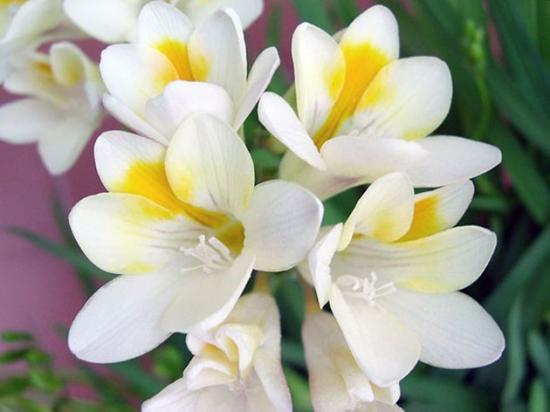
Some gardeners who consider themselves quite experienced grow freesia from seeds. But this process is long, tedious and very unreliable. Therefore, we will leave it to real gardening gourmets and use a proven method. It is best to plant germinated flowers in mid-May, after the last frost has passed.
First you need to make holes with a depth of 3 to 6 cm in such a way that large tubers will be 5 cm apart from each other, and small ones at a distance of 3 cm. Make the distance between the rows at your discretion, but not less than 15 cm. This way the flowers will be look harmonious and beautiful. After planting, you need to level the ground and mulch it with peat. In this way, you will protect the tender roots of freesia from the sultry heat.
By the beginning of August, the flowers will produce 1-3 peduncles, and will bloom on average until mid-October. Depending on weather conditions. If you plan to grow a flower at home, then the planting rules remain the same, only the bulb should be planted immediately in the pot in which the freesia will grow constantly.
The care freesia needs
Freesia is simply a sissy and needs especially careful care.In order for the flower to feel good and give you beautiful flowers, you need to provide the following conditions:
- Lighting
- Soil quality
- Temperature
- Humidity level
The flower requires lighting 14 hours a day. This is approximately equal to daylight hours in summer. But the rays of the sun should not be direct, only shaded, otherwise they will simply burn the delicate leaves and flowers of freesia. If the flower grows at home, then the illumination should be dimmed, and the light of the lamp should be directed through a thin cloth or sheet of paper.
At home, drafts or free air flows throughout the room are unacceptable. If you decide to ventilate the room where the freesia is located, you need to take it to another room, and only then open the window. The soil for the flower should be loose. Place drainage at the bottom of the pot.
The soil must consist of five components: turf, sand, humus, peat and soil. Only with such soil and the absence of an acidic environment will the flower feel good.
Temperature. The best temperature for freesia growth is +22 degrees. If it is higher, then flowering may not occur at all. When pecking a sprout from the bulb, you need to reduce the temperature to 15-18 degrees, and then raise it to the desired level.
Video review of freesia flower:
Humidity level. The flower loves not only high levels of humidity in the air, but also in the ground. Of course, it is better not to overwater the flower, but constant moisture promotes the rapid formation of large and beautiful flowers. The best way to moisturize freesia is to spray it. But during flowering, drops should not be allowed to fall directly on the flowers, otherwise they may fall off.
Care after landing
At home, in the wild, the flower tubers are kept in the ground for 3-4 months at high temperature and humidity. Only after this period does freesia begin to germinate and bloom. As for growing a flower at home, immediately after planting the freesia in the pot you need to set the temperature to 15-17 degrees.
It is considered optimal for rapid growth and the formation of beautiful large flowers. If the temperature is below this norm, the flower stalks will be short and underdeveloped.
Elevated temperatures, +20 and above at the initial stage contribute to the formation of large leaves to the detriment of flowering. At temperatures of +25 and above, flowering does not occur at all. You need to evenly moisten the soil by spraying, and after 2-3 weeks the first shoots will appear
Growing activities
There are certain subtleties that will help you grow a beautiful flower that will delight you with blooming for a long time. You need to familiarize yourself with them in advance. Better fertilize flower only with liquid fertilizers. Mineral fertilizing is applied 3-4 times during the active growth phase. If the flower is grown in open ground, then you can use the following fertilization scheme:
- Fertilization with ammonium nitrate in the amount of 20 grams per bucket of water is carried out as soon as the first shoots appear.
- Every 2 weeks, fertilizing is carried out in the form of 40 g of superphosphate and 20 g of potassium salt per 10 liters of water.
Trimming. In order for a cut flower to please you for a long time, you need to cut it as soon as the first 2 or even 1 flower from the inflorescence has bloomed. Inflorescences that have already wilted need to be cut off as early as possible so that the flower does not waste nutrients on them.As soon as the freesia leaves begin to turn yellow (usually in mid-October), the bulbs need to be dug up and only then cut off the top part.
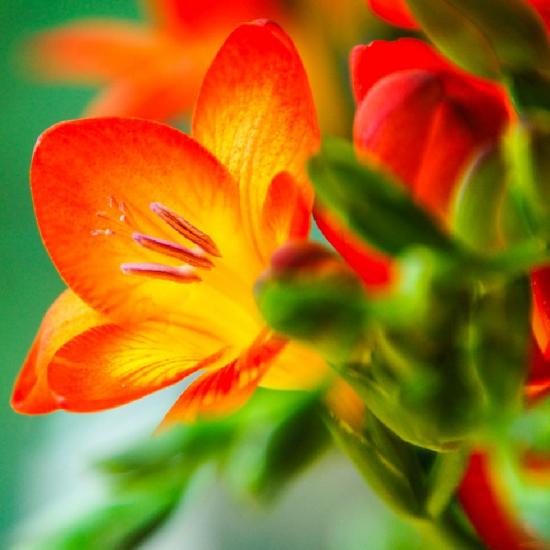
Mulching the soil around the flower is a must. This is done in order to provide a humid environment. It is best to use soft peat or steamed straw. Also thanks mulching the ground temperature will remain within 20 degrees even on the hottest days.
Freesia is an unusually delicate and beautiful flower that, with proper care, will delight you with large and beautiful flowers for a long time.

